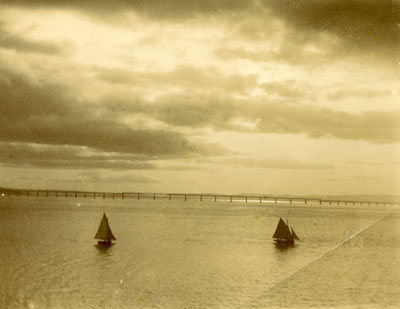and the wrong one I have chose …
[name that tune *]
Certainly in Victorian Newport you may well have chosen the wrong direction – particularly if you were looking for a property in East Newport. Take, for example, Messrs Hutton and Boase (who owned houses within 50 yards of each other in Marytown, albeit 20 years apart).
The legal descriptions of their properties have Tay Street to the north and Union Street to the south, Hutton has Robert Street to the west and Boase has other Marytown properties east and west.
In fact, ALL the Marytown properties refer to Tay Street on the north with Union Street, King Street and Queen Street to the south.
The field behind or above Marytown (Backfield Park – where Woodbine Terrace and Maryfield were built) was referred to as ‘the land south of Marytown’. There are also references to houses and shops on the north side of the High Street.
But look at the map.
Tay Street, Union Street, King Street, Queen Street and the High Street run almost north to south. In other words, Tay Street is WEST of Marytown, and the ‘north’ side of the High Street is actually the west side.
Confused?
Well, the extreme case is given by the plots of land on the corner of Queen Street, James Street and King Street. The field was divided into four plots, described as the NE, SE, SW and NW lots. But on the ground, the NE plot is actually the NW one, the SE is in fact the NE one, the SW one is really the SE one and the NW plot is the SW one. (I wonder if people bought the one they were expecting to buy?)
The reason for all this geographic muddle appears to be – nobody used a compass but assumed that the river was to the north of Newport. Which is true for most of Newport, but not for the part from the foot of the High Street to the foot of James Street – where the coast turns from running west to east, to running south to north, before turning again back to running west to east. As anyone who lives here will tell you, the magnificent sunsets show that these houses look west.
So when you are stuck with directions which don’t appear to be quite right, use the rule ‘if you face the shoreline you are looking north’.

Looking north into the sunset.
(photo by Alexander Robertson c.1896)
Sources:
Sasine Abridgements – 1826.03119, 1866.00933 (for Marytown lot 6, Hutton)
Sasine Abridgements – 1826.03335, 1840.04731 (for Marytown lot 7, Boase)
Town Council Minutes 1906-07 – plans for David Young to build shops on north side of the High Street
* Buttons and Bows, 1947, lyrics – Ray Evans, music – Jay Livingston, Academy Award winner for Best Original Song in ‘The Paleface’ starring Bob Hope & Jane Russell.

Hello 🙂
Through Google I ended up on the https://www.newportarchive.co.uk/ website.
I’m wondering if it might be possible to get/buy a high resolution copy of the following image: https://www.newportarchive.co.uk/images/Newport/new_Tay_Bridge_Millar.jpg
Best Regards
– Suzanne
I have replied to your email address.
Regards,
William Owen
Hello,
The Newport, Wormit & Forgan Archive is such a wonderful resource – thank you! I found it fascinating to learn the history of my home in Newport.
Recently, I moved to Cupar and I would like to similarly know the history of my home and who has previously lived here, but I have found no comparable resource. Where would you suggest I begin looking?
Thank you
Thank you for your comments.
It all depends on the age of the house. The sources I used most are maps, directories, census, and valuation rolls.
There is an excellent link to the National Library of Scotland maps page Maps for researching house history. Cupar town plans are good.
Cupar Library has the census on microfilm, some valuation rolls but no directories. The staff are extremely helpful. Census and valuation rolls are the easiest to use but they will require searching (on film or in book form) until you find the correct address. Directories for Cupar will only be the national ones (MacDonald, Slater, Pigot) available from the National Library of Scotland online. Valuation rolls and censuses are also available online at ScotlandsPeople but they are only searchable by name (not useful until you have the names of former residents). Work backwards in time. You may have to take details for a group of houses in order to be sure of the sequence of buildings. Apart from telephone directories (which are not useful) there are no resources online more recent than 1940. Try to work from local paper or film sources if you can, then purchase from ScotlandsPeople if needed.
Hope this gives you a start.
Regards,
William Owen